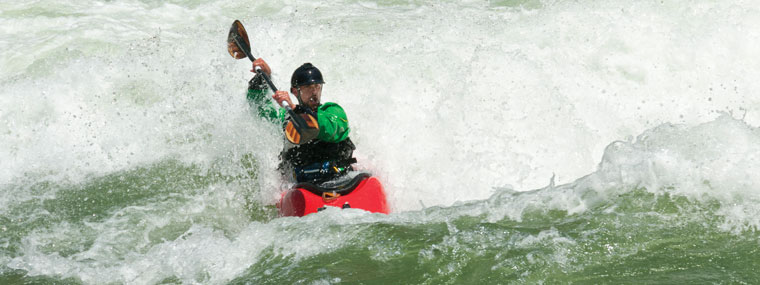
Rapids
By Betsy Barbieux, CAM, CFCAM, CMCA / Published February 2021

Whitewater rafting is a sport enjoyed by many. It is an adventure full of twists and turns, ups and downs, and sheer fright. While some people enjoy a canoe ride down a lazy river, others are thrilled by the danger and skill required to navigate the whitewaters.
Those who are familiar with whitewater rafting know there are various classifications of the moving water.
Class I
Moving water with a few riffles and small waves. Few or no obstructions. Great for a beginner.
Class II
Easy rapids with smaller waves, clear channels that are obvious without scouting. Some maneuvering might be required but still not too much of a challenge for beginners.
Class III
Rapids with high, irregular waves. Narrow passages that often require precise maneuvering. You’ll need a lot of skill, a good rafting team, and a willingness to get wet.
Class IV
Long, difficult rapids with constricted passages that often require complex maneuvering in turbulent water. The course may be hard to determine, and scouting is often necessary. Your team members will need to have a lot of experience, high levels of skill, and nerves of steel.
Class V
Extremely difficult, long, and very violent rapids with highly congested routes, which should be scouted from shore. Rescue conditions are difficult, and there is a significant hazard to life in the event of a mishap. The upper limit of what is possible in a commercial raft. Your teammates should be professional rafters with wisdom and respect for the waters because this trip could hurt you.
Class VI
The difficulties of Class V carried to the extreme. Nearly impossible and very dangerous. For teams of experts only. Involves risk of life.
What causes rapids? It is pressure created by barriers to the flow of the water. Are the passages narrow or wide, curved or straight, flat or downhill, or shallow or deep terrain? Pressure can be positive or negative. The same with obstacles; they can cause one to be creative, adaptable, or crushed and hurt.
With a little imagination it is easy to see these classifications of rapids as a typical work week for a Florida community association manager. Some days end with multiple classifications. A day might start as a Class I and quickly become Class IV with one telephone call.
Just like water rapids, the rapids of a day are caused by pressures and obstacles. Our pressures can be external or internal. Examples of external pressures could include deadlines, details, duties, and expectations.
Internal pressures could include stress, worry, fear, and all the other things that keep you awake at night or make your heart race.
Obstacles can also be external or internal. Examples of external obstacles could be people, lack of resources, and management structures that do not allow for flexibility for making swift changes.
Internal obstacles could include your own insecurities, indecisions, and weak integrity.
Often, time is blamed for external pressures. But, time could be your friend if you know that time is under your control. Your use of time depends on your choices. We often misuse time to avoid doing something we dislike.
If you hate boring work, you may procrastinate by stopping a boring task to move on to a more challenging one like confronting the contractor who is restoring the balconies. You may have too many irons in the fire but hate to delegate any of them because of your philosophy, “If you want something done right, do it yourself.”
If you hate detailed, repetitious work, you may look for any reason to abandon detail work—such as creating an ARC report or reconciling the checkbook—in favor of a friendly telephone call. You may justify it on the grounds that it is important to build public relations.
If you dislike conflict and strife, you may put off pressure-related activities such as terminating an employee and end up spending time performing low-value, non-pressure tasks like posting or filing.
If you dislike making important decisions quickly, you may tend to question every aspect of a situation and play out all possible scenarios. You may overanalyze to the point of paralysis and cause more problems because of the delayed decision.
Be sure to remember that all time pressures and obstacles are not created equal. Stephen Covey, author of The Seven Habits of Highly Effective People, created a time management matrix that divides important and urgent into four categories.
Important and Urgent—This screams the loudest when you walk through the office door.
Important and Not Urgent—This is the task that needs to be done but keeps getting pushed back, yet it rattles around in your head reminding you to get it done.
Not Important and Urgent—These are some of the people interruptions—office visits, telephone calls, emails, and texts.
Not Important and Not Urgent—These are the time wasters—getting involved in minor details and trivia, busy work, some mail and phone calls, time wasters, and pleasant activities like computer games, surfing the net, or watching Netflix.
The year 2020 was full of pressures and obstacles for CAMs and boards of directors. There were intense time challenges. However, many found that pressures and obstacles could promote innovation, inspiration, taking risks into the unknown, and when reflected upon, incredible accomplishments. We experimented with new ways to conduct meetings, to work remotely, to reopen our amenities with safety protocols, to use videoconferencing to communicate and socialize, to walk more, to enjoy our neighbors and beautiful buildings and grounds, and still have time to get our work done.
Not every day is a good day, but there is good in every day.
– Chad Fleming, Retired U.S. Army Captain
Betsy Barbieux, CAM, CFCAM, CMCA
Florida CAM Schools
Betsy Barbieux, CAM, CFCAM, CMCA, guides managers, board members, and service providers in handling daily operations of their communities while at the same time dealing with different communication styles, difficult personalities, and conflict. Effective communication and efficient management are her goals. Since 1999, Betsy has educated thousands of managers, directors, and service providers. She is your trainer for life! Betsy is the author of Boardmanship, a columnist in the Florida Community Association Journal, and a former member of the Regulatory Council for Community Association Managers. Subscribe to CAM MattersTM on YouTube. For more information, contact Betsy@FloridaCAMSchools.com, call (352) 326-8365, or visit www.FloridaCAMSchools.com.




